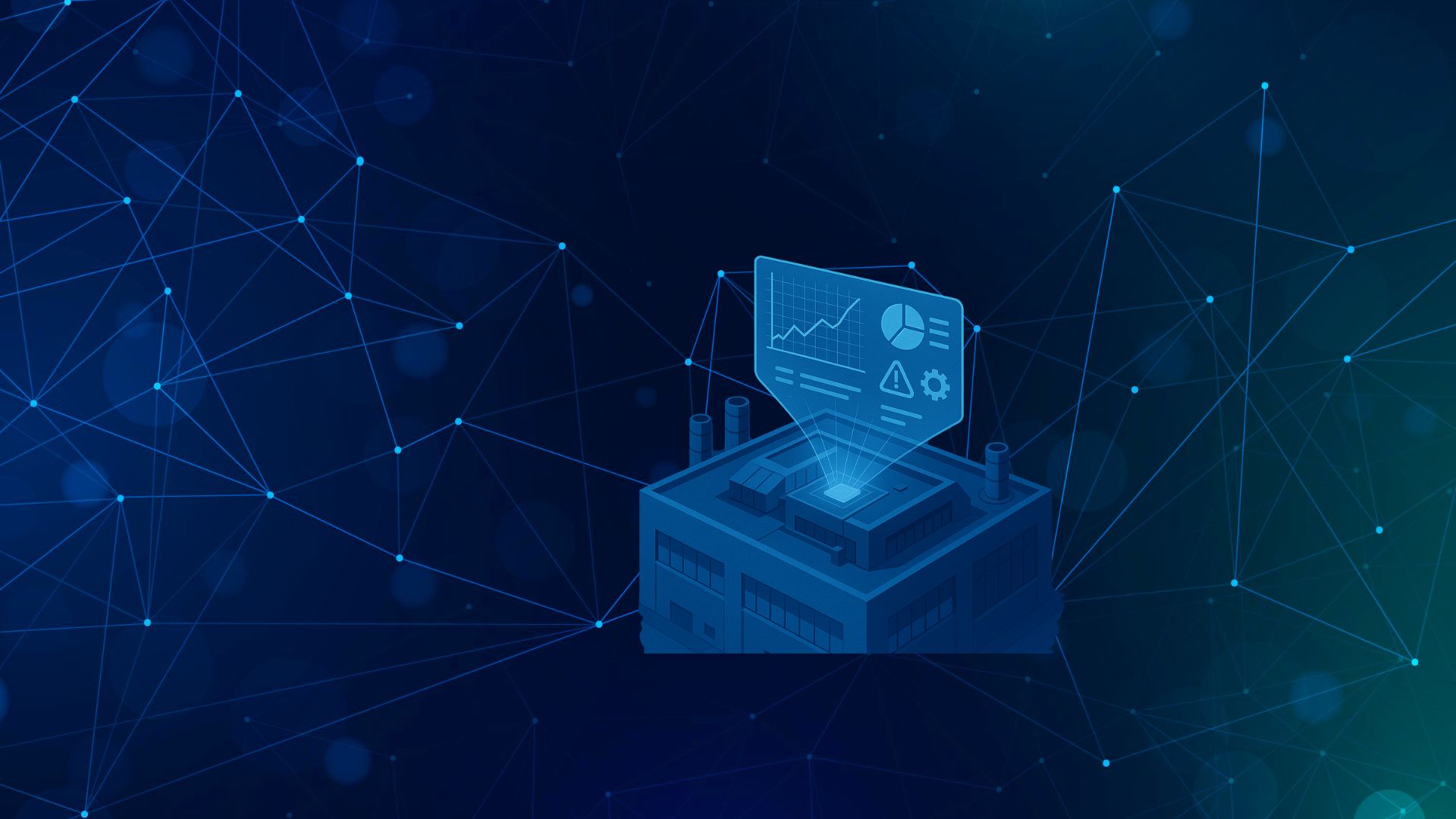Executives in the food and retail sector are navigating unprecedented challenges: soaring energy costs, growing demands for traceability, and the pressure to comply with increasingly strict sustainability regulations. At the same time, consumer behaviour is more dynamic than ever, requiring businesses to respond quickly to fluctuations in demand. In this context, smart factories emerge as a powerful model that combines digitalisation, real-time data, and predictive operations to achieve efficiency, resilience, and long-term competitiveness.
What is a smart factory: definition beyond automation
A highly automated plant is not necessarily a digital factory. The difference lies in the way technology is integrated. The true smart factory definition goes beyond robotics: it involves the combination of IoT sensors, advanced analytics, artificial intelligence, and interoperable systems that connect production, logistics, quality, and maintenance in a single ecosystem.
The strategic value is visibility: managers can track performance in real time, anticipate risks, and make better decisions. Whether it is monitoring energy consumption or ensuring compliance in cold storage, the digital factory allows leaders to act proactively rather than reactively.
Benefits of smart factory
Adopting a digital factory or a tailored smart factory solution generates measurable advantages for both strategy and daily operations:
- Operational efficiency: connected systems optimise production cycles, reduce downtime, and cut waste.
- Enhanced quality and compliance: digital traceability enables faster audits and greater consumer trust.
- Flexibility: the ability to adapt production or logistics to seasonal peaks and sudden market shifts.
- Sustainability and ESG: improved energy performance, reduced emissions, and alignment with European environmental goals.
For CEOs and operations directors, the benefits of smart factory adoption translate into stronger competitiveness and lower risks across the supply chain.
Digital factory examples
Several smart factory examples highlight how these concepts are being applied today:
- Food processing plants: sensor-driven production lines that automatically adapt cooking, packaging, or cooling parameters depending on variations in raw materials.
- Distribution centres with refrigeration: smart factory software predicting energy demand in cold storage facilities and adjusting compressor loads to avoid surcharges.
- Supermarkets with connected assets: remote monitoring of refrigerated cabinets, alerting managers before deviations compromise food safety.
These initiatives demonstrate how a digital factory approach is not exclusive to large corporations. Medium-sized businesses in the food sector can also adopt incremental projects with a clear return on investment.
Refrigeration as a strategic area in the digital factory
Refrigeration is often the single largest energy consumer in food manufacturing and retail, representing up to half of total electricity usage in some facilities. For this reason, integrating cold storage into the digital factory framework is highly strategic:
- Real-time monitoring of compressors, evaporators, and display cabinets.
- Energy savings through dynamic adjustment of loads depending on occupancy or outdoor temperatures.
- Waste reduction by detecting temperature deviations before product integrity is at risk.
- Predictive maintenance to extend asset life and minimise unplanned downtime.
- Centralised management of multiple sites with unified control software.
The ROI is clear: reduced energy bills, fewer product losses, and improved compliance with food safety regulations.
Smart factory technology pillars
While each area deserves its own analysis, several technological pillars form the foundation of smart factory solutions:
- IoT and sensors that collect performance data across machines and processes.
- Advanced analytics and AI to identify patterns and prevent failures.
- Digital twins, enabling simulations for planning and optimisation.
- Smart factory software integrating data from production, maintenance, and quality control.
- Cybersecurity, ensuring resilience against cyber threats in connected operations.
Challenges in implementing smart factory solutions
Despite the advantages, moving towards smart factory solutions is not without obstacles:
- Investment and ROI: initial capital costs need to be balanced with expected savings.
- Skills gap: shortage of data analysts and cybersecurity experts.
- Cultural shift: employees require training and engagement to embrace new technologies.
- Scalability: success lies in starting small, with pilot projects, and expanding progressively.
Building a smart factory strategy: roadmap for executives
For executives designing a smart factory strategy, a phased roadmap is recommended:
- Initial assessment: identify bottlenecks and critical processes.
- Prioritisation: refrigeration, production, or logistics as starting points.
- Pilot projects: test smart factory solutions on a smaller scale.
- Scaling: expand successful initiatives across the organisation.
- Continuous improvement: monitor performance, benchmark, and optimise.
This incremental approach reduces risks while demonstrating value at each stage.
Conclusion: smart factories as the roadmap to competitiveness in the fourth industrial revolution
Smart factories represent more than a technological upgrade: they are a strategic tool for achieving operational resilience, sustainability, and market competitiveness. Their impact is twofold: giving executives actionable insights and enabling plant managers to guarantee quality and continuity.
In industries where refrigeration is critical, the digital factory approach ensures food safety, reduces waste, and delivers tangible financial returns.
Ultimately, this transformation is part of the Fourth Industrial Revolution, a global shift reshaping how we produce, distribute, and consume — and placing the smart factory at the heart of industrial progress.



